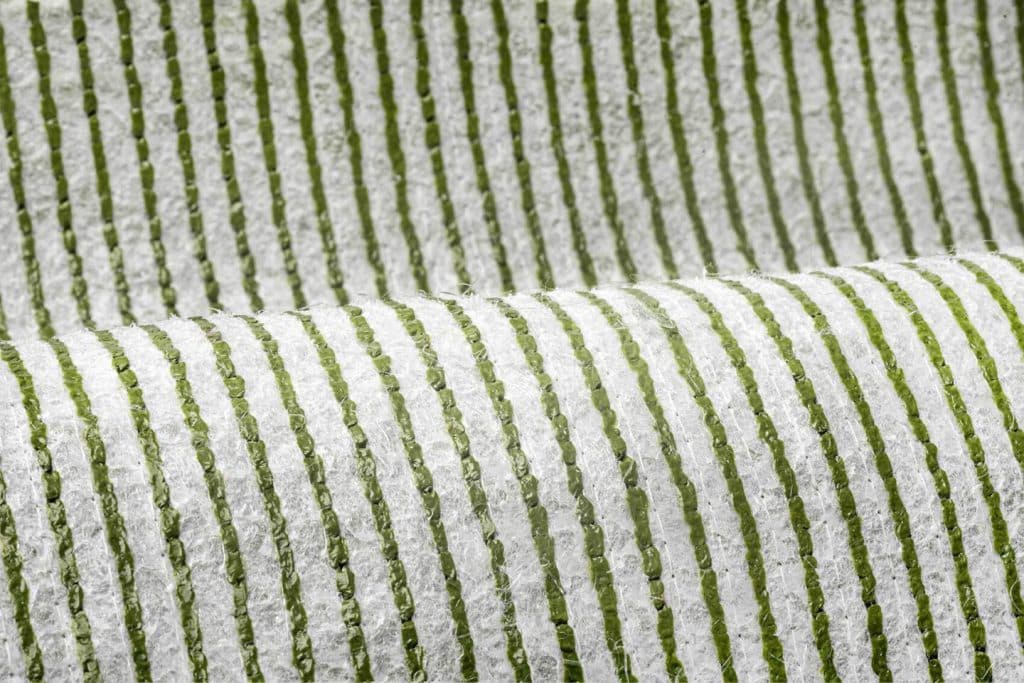It's time for change


ONE-DNATM Artificial Grass
ArtificialGrass.com are at the forefront of the industry, offering ground breaking products to help future proof your business, as they reveal a UK-exclusive launch of ONE-DNA™ artificial grass.
ONE-DNA™ artificial grass consists of just one raw material. The result is a lower carbon footprint in production and maximum recyclability when the grass is considered ‘end of life’. This unique formula also allows for our ONE-DNA™ artificial grass to be made from recycled materials further reducing the carbon footprint.
The circular approach ensures that materials used can easily be retained and reused in their initial high value state. This minimises the need for new raw materials end of life and reduces waste.
100% Circular
Our pioneering ONE-DNATM artificial grass
is a single polymer product for all future artificial lawn generations where fibres and backing are recycled in one process – and then reimagined into new lawns or new polyethylene (PE) products.


ONE-DNATM Range
Why ONE-DNATM?
Artificial grass is traditionally produced and compiled from various materials, such as PP and/or PE yarn fibres and Latex, PP or PU backing. The production of these grasses uses immense amounts of energy, and, due to their composition, the end product is difficult to recycle and cannot be made into grass again.
With the ONE-DNA™ artificial grass, it consists of just one single material: 100% PE. Production takes place in an energy-efficient production facility, which means we use significantly less energy than traditional artificial grass products require.
The production process of our artificial grass is barely different from that of other manufacturers. It’s all in the final phase of the process. In that phase, the grass piles are secured to the mat. Contrary to other producers, we achieve this so-called ‘tuftlock’ without the need for a latex, PU or PP dispersion coating. This way, we skip a step that produces immense CO2 emissions, since we don’t need giant ovens to dry this coating.
Lansink’s Ladder is a waste hierarchy model in which waste prevention is paramount. which consists of four forms of dealing with waste. The highest priority is given to prevention (A), followed by the highest possible reuse (B and C). The third form of the waste hierarchy is the incineration of waste to generate energy (D and E). The least desirable form is landfilling or dumping (F).
ONE-DNA™ products fall into the categories of prevention (A) and reuse (B).
Many producers of artificial grass promise their products are recyclable. So, what makes our ONE-DNA™ turf different? Well, quite a lot! Most recycled synthetic grasses are really downcycled: the product may be used for new applications, but the end product, or RTA (Recycled Turf Agglomerate), no longer has the purity of the original material. These materials are of a significantly lower quality, making them less useful for the production of new products. As such, their value decreases during the recycling process.
With our circular artificial grass, we’re achieving a new level in recycling! High-grade recycling without loss of value, while retaining the purity of the original material.
To objectively establish the value of our products, we commissioned SGS Intron as an independent testing and certification institute to verify the single polymer composition and the absence of hazardous substances (SVHC). These aspects are essential to prove the circularity of ONE-DNA™ products. ONE-DNA™ means that the products are produced from one type of polymer: poylyethylene (PE).
The analysis by SGS Intron (A133330/O20220953) shows that our product is 100% circular. It can be reused in high-quality applications such as new artificial grass, but also in other products with similar values. This is full recycling and not down-cycling.

© Copyright ArtificialGrass.com 2024
